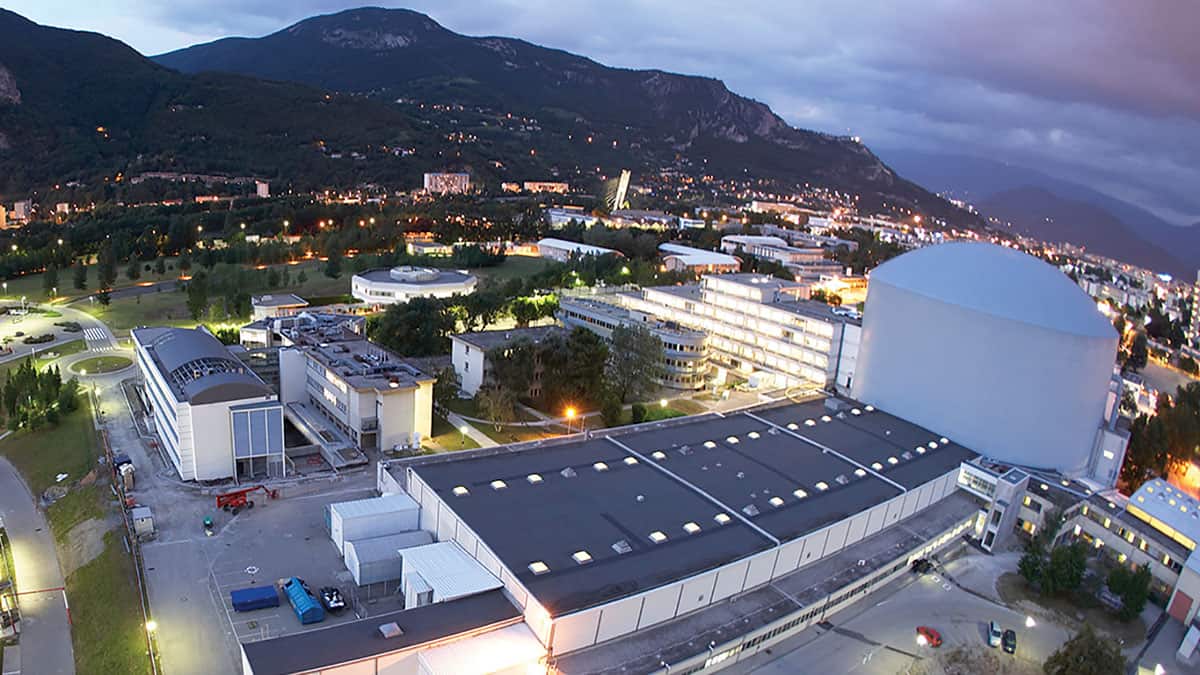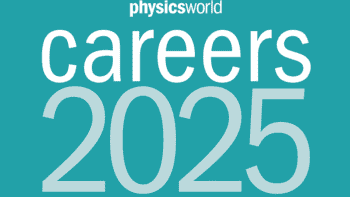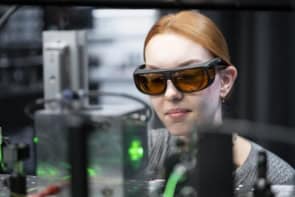Estelle Mossou explains how she balances the demands of users while carrying out her own research

The intimate atmosphere of the university campus at Bath University in the UK where I studied physics reminded me of Libreville, the small town I had left behind in Gabon. After completing a year-long placement at the Institut Laue-Langevin (ILL) in Grenoble, France, in 2004, which contributed to my master’s degree in physics, I felt that same atmosphere where everybody knows everybody else.
I enjoyed the experience of my placement so much that I came back to the ILL in 2005 to do a PhD, which involved studying self-assembling filament-like systems for biomedical applications. After a postdoc developing neutron and X-ray techniques to study biological systems, in 2014 I became a staff scientist at the ILL, running the lab’s D19 neutron diffractometer. Part of my responsibility is to help researchers from all over the world make the most of this facility, applying my expertise on their behalf to carry out world-class science.
The ILL, which is located at the foot of the French Alps, is an international research centre with close to 500 people from 40 different countries. The facility has around 40 different instruments including diffractometers and spectrometers. The D19 instrument is a world-leading monochromatic thermal diffractometer that is used for detailed molecular studies in chemistry, biology and polymer science. Examples of research performed on D19 includes looking at proton hopping in molecular solids, studying enzymatic pathways connecting glucose to fructose, carrying out structural studies of DNA and analysing of the high-performance polymer Kevlar. The choice of which wavelengths to use for a particular experiment depends on the sample size and crystallographic unit cell, with D19 utilizing neutrons with a wavelength from 0.95 to 2.42 Å.
The choice of instrument and technique very much depends on the problem at hand – academic or industrial. As an instrument scientist, my tasks are diverse and variable. The primary one is to provide support to users for a variety of scientific experiments. Here my job is to assist the experimental team to obtain the best possible results from samples the preparation of which has often taken many months of work. The planning of the experiment will strongly depend on the specific nature of the sample, the length of beam time allocated to that particular experiment and obviously what the users need and expect.
The instrument-scientist role also implies a strong involvement in the development and upgrade of the instrument – something that is carried out very much in consultation with the external user community. Indeed, D19 was recently rebuilt and upgraded thanks to a grant from the UK’s Engineering and Physical Sciences Research Council.
Broadening horizons
Working at a facility like the ILL is not without its challenges. Experiments can be tough and tiring, and instrument scientists have the added worry of being responsible for users’ samples given that the result of their experiments are often crucial to their research. Sample preparation is often very demanding for users as their samples are often fragile, unstable or rare. This puts some added pressure and you have got to be as committed as if it were your own sample. Rigorousness, the ability to multitask, some creativity, patience and perseverance are great assets that you learn to develop, but it is a constant learning curve.
In addition to helping users, I am also developing my own in-house research work directly derived from both my PhD and postdoctoral work that focuses on protein folding and how this can cause neurodegenerative diseases such as Alzheimer’s and Parkinson’s disease. But one of the advantages of working as an instrument scientist is the opportunity to collaborate on a wide variety of research projects well beyond that to which a typical researcher is exposed. Interacting with research teams from around the world opens up your mind to a variety of different ideas in dynamic and challenging fields, and can lead to interesting partnerships and open up new perspectives. Recently, I had the opportunity to be involved in studying how cellulose fibres behave when they are stretched to breaking point. These results will be useful in the manufacture of textiles and have an impact on other industrial applications.

On a daily basis this type of role benefits greatly from the interdisciplinary nature, the scientific background, and the multiculturalism of the ILL’s working environment. For me, the single biggest aspect that distinguishes a research centre like the ILL and anywhere else is precisely this sense of variety and diversity. The Grenoble campus is unique in that we have other world-class research facilities next door, such as the European Synchrotron Radiation Facility (ESRF), the European Molecular Biology Laboratory and the Institut de Biologie Structurale.
In all areas it is very clear that there is strong emphasis on interdisciplinary science, and neutrons occupy a central role alongside other major techniques including X-rays, electron microscopy and nuclear magnetic resonance. The European Photon and Neutron campus site – combining ILL, ESRF and the EMBL – naturally fosters a sense of community spirit among its users and staff.
User demands
The work rhythm of an instrument scientist varies and is very much correlated to the reactor cycles, which typically last 50 days. During this time, one of my colleagues or myself will be responsible for running the experiments. The instrument and user experiments are always the priority, so you have to make sure that however you organize your working day, you are – or can be – made fully available to the users whenever needed. Users apply for beam time through a competitive proposal system that is very carefully peer reviewed by a scientific panel of world experts – only the best experiments that are judged feasible on the instrument are selected and a fixed number of days will be allocated to the experiment. Experiments are mostly scheduled back to back so it is very important to maximize the time allocated to each experiment. It is therefore vital to work as efficiently as possible to allow the users to collect the data they need in the time given.
The structure of the working day very much depends on the type of experiment – some are more challenging than others in that they may be less standard in terms of set-up and sample environment, or simply because the sample is not behaving as planned. There are many parameters to take into account and, of course, not everything goes according to plan. As the intervening shutdowns last anywhere from two weeks up to three months during the winter period, that time can be spent catching up with data processing for the users, spending time on your own research, and writing the papers we were too busy to draft while the reactor was on. There is really no such thing as a typical day and that contributes to the attractiveness of the job.



